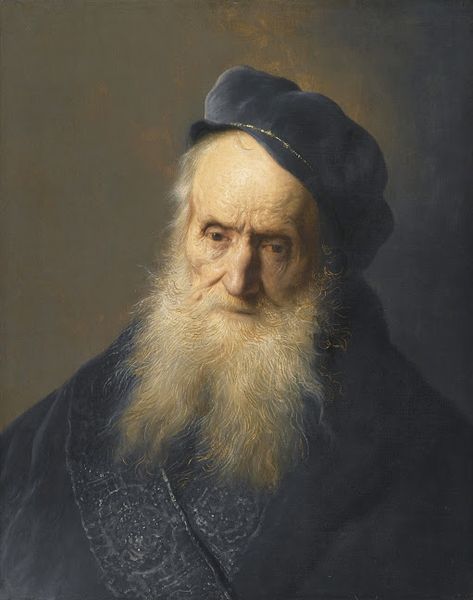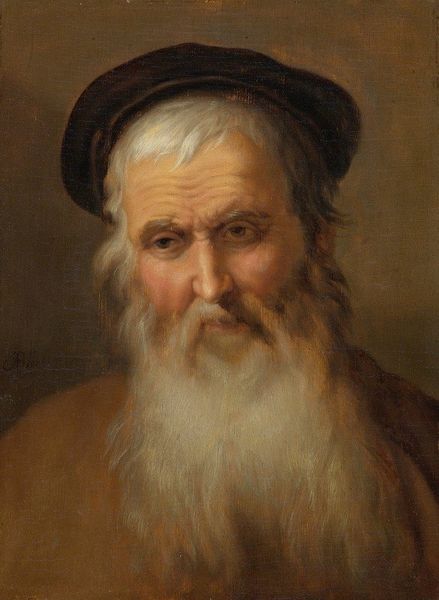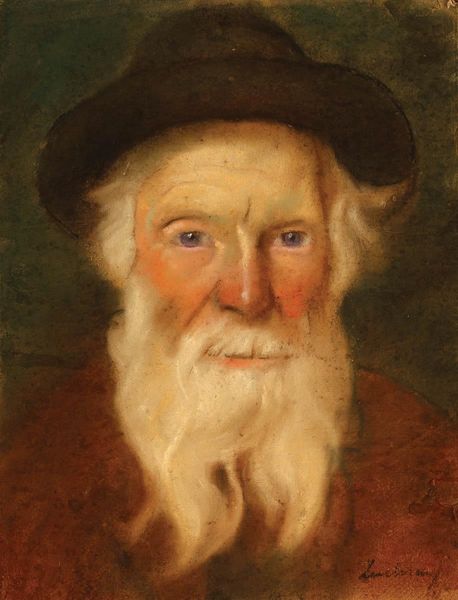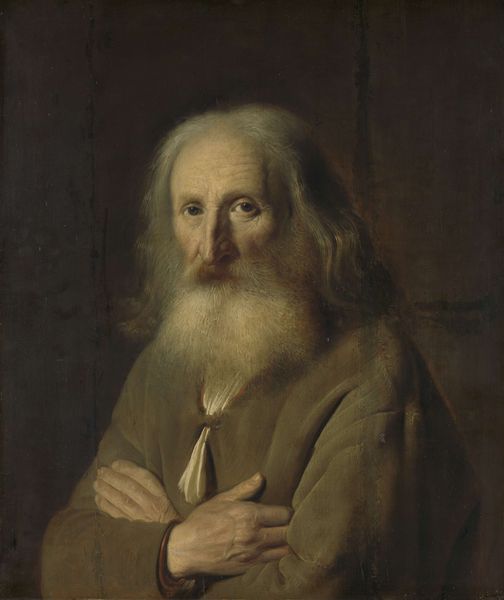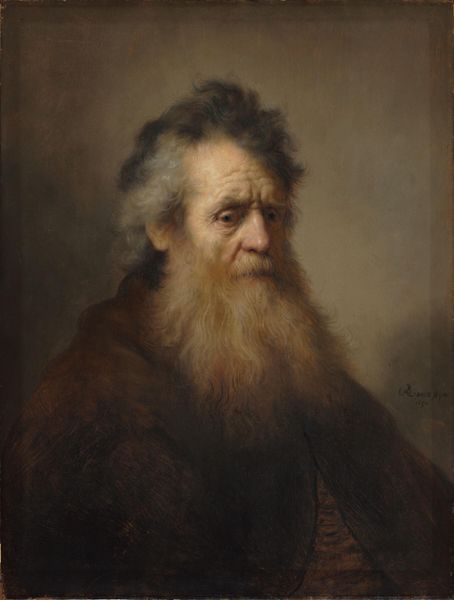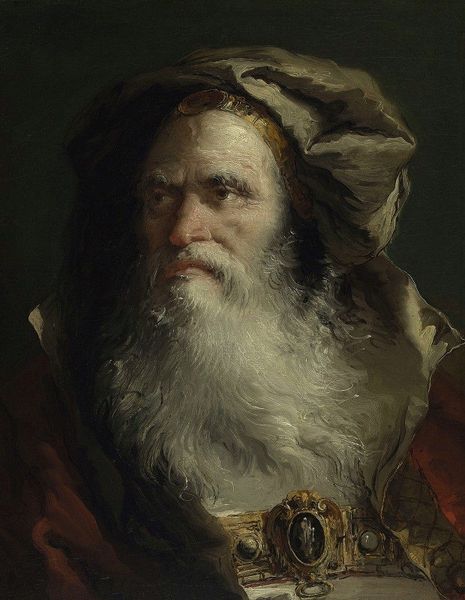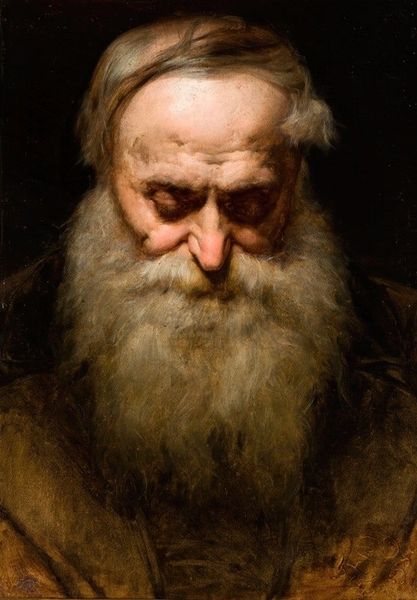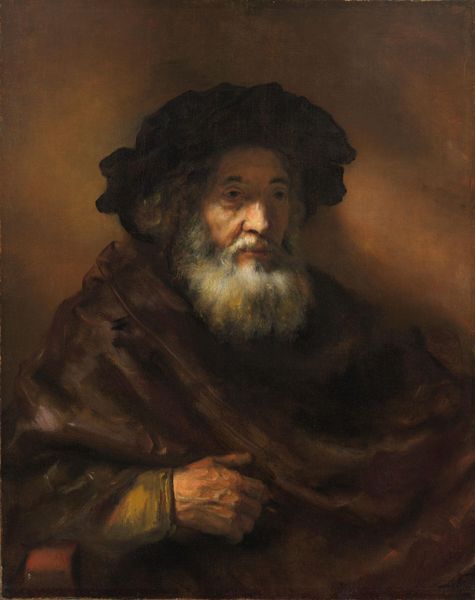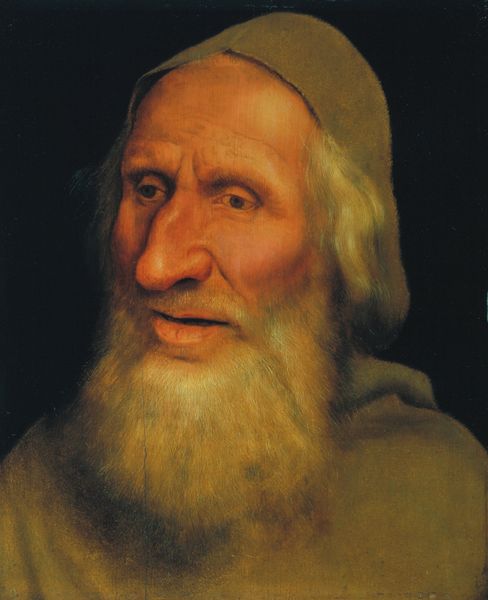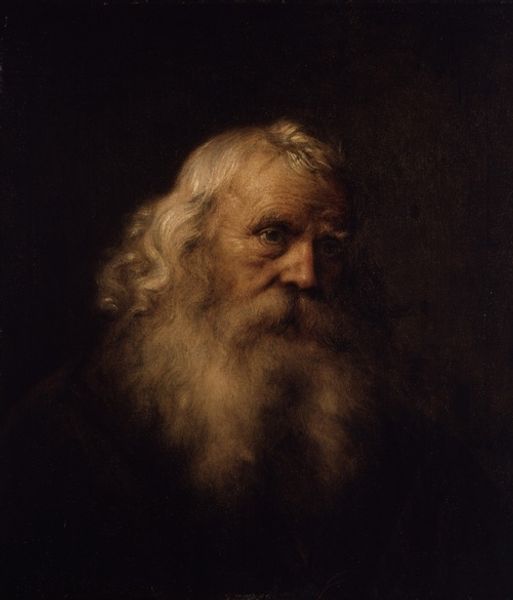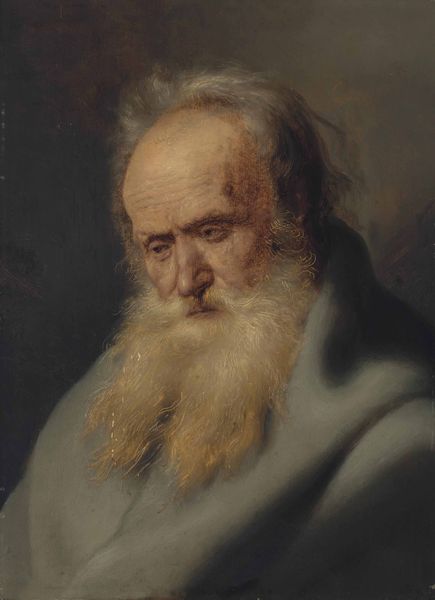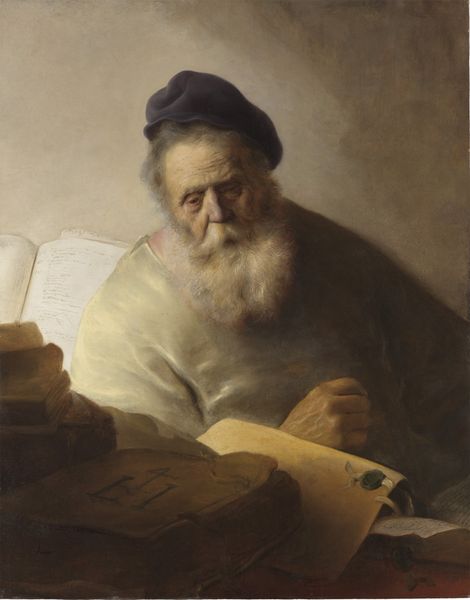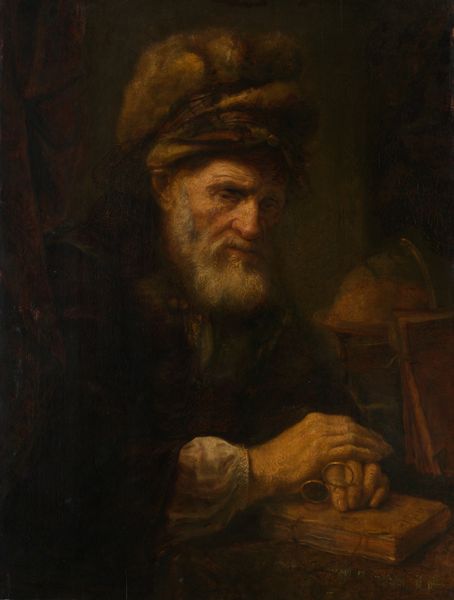
painting, oil-paint
#
portrait
#
self-portrait
#
baroque
#
painting
#
oil-paint
#
chiaroscuro
#
realism
Copyright: Public domain
Curator: Let’s discuss Jan Lievens’s 1630 oil on panel, “Bearded Man with a Beret.” It resides here at the National Gallery of Art. Editor: It’s remarkable how his gaze draws you in. There’s a deep pensiveness about him – a questioning of something unseen, perhaps something beyond our realm. Curator: That pensive mood is carefully crafted. The painting, made when Lievens was quite young, fits within a broader historical context of self-study in art. Think of the period’s religious introspection, its emphasis on individual moral reckoning, and consider what a portrait might signify in that framework. Editor: Right. Is he posing a question about privilege and its moral burdens, particularly from the perspective of aging and reflection? What does this elder’s portrayal ask us to acknowledge about him? Curator: The beret is important. It adds to the painting’s visual texture but consider, too, how portraiture conventions could both limit and expand self-representation, shaping public image. The piece invites questions regarding identity construction and its challenges. Editor: Indeed. But then consider the materiality – the tangible feel of aged pigment. Note, the canvas texture suggests a realism verging on grit. Do the formal details work as a metaphor, challenging conventional narratives around gender, social equity, or other power relations of the period? Curator: Baroque naturalism demanded rendering tactile qualities, especially in portraiture, but to extend beyond this artifice to modern social-political equivalencies risks interpretative license. Still, you remind us to keep socio-economic perspectives within art discourse. Editor: It underscores, for me, that art's meaning always grows beyond intention; it thrives in dialog between historical fact and the experience it invokes, a space where politics, ethics, and aesthetics become one. Curator: His rendering of light, that dramatic chiaroscuro, does provide avenues for further cultural commentary. I find the effect haunting and it's fascinating how it transcends period norms. Editor: This aged figure transcends the limitations of art by the period. There's a universality embedded here, sparking the discourse we have pursued today.
Comments
No comments
Be the first to comment and join the conversation on the ultimate creative platform.
